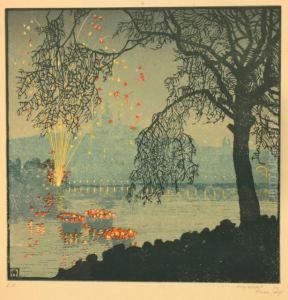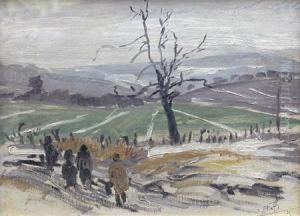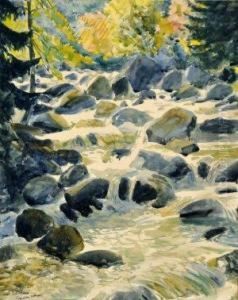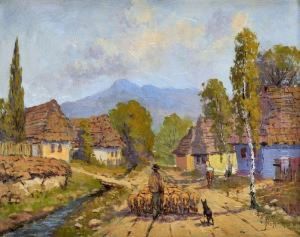Otakar Stafl Paintings
Otakar Štáfl was a notable Czech painter and graphic artist, whose work was an important contribution to the early 20th-century art scene in Czechoslovakia. Born on July 22, 1884, in Prague, which was then part of the Austro-Hungarian Empire, Štáfl was deeply influenced by the currents of Art Nouveau and later by Art Deco, movements that were defining the visual arts landscape in Europe at the time. His artistic journey began at the Academy of Fine Arts in Prague, where he honed his skills and developed a distinctive style characterized by a rich palette, attention to detail, and a penchant for combining realism with elements of fantasy and symbolism.
Štáfl's body of work spans a diverse range of subjects, including landscapes, portraits, allegorical scenes, and illustrations for books and magazines. Among his contributions, his illustrations for children's books are particularly celebrated, capturing the imagination of both young and old with their whimsicality and vibrant storytelling. His landscapes, often depicting the Czech countryside, are noted for their lyrical quality and the way they evoke the atmosphere of the locations portrayed.
Throughout his career, Otakar Štáfl was an active participant in the artistic life of Prague and beyond, exhibiting his work in numerous solo and group exhibitions. His art was not only well-received in Czechoslovakia but also gained recognition abroad, contributing to the international dialogue on modern art movements of the time. Despite the challenges posed by the political and social upheavals of the early 20th century, including the First World War, the collapse of the Austro-Hungarian Empire, and the rise of fascism leading into the Second World War, Štáfl continued to produce work that was both reflective and escapist, offering viewers a respite from the turmoil of the era.
Otakar Štáfl's legacy is that of a versatile and visionary artist who left an indelible mark on the Czech art scene. His contributions continue to be celebrated for their beauty, technical skill, and imaginative power. Štáfl's death on March 4, 1945, in Prague, marked the end of a prolific career, but his work lives on, preserved in museums, galleries, and private collections around the world, as a testament to his artistic achievements and the enduring appeal of his vision.



